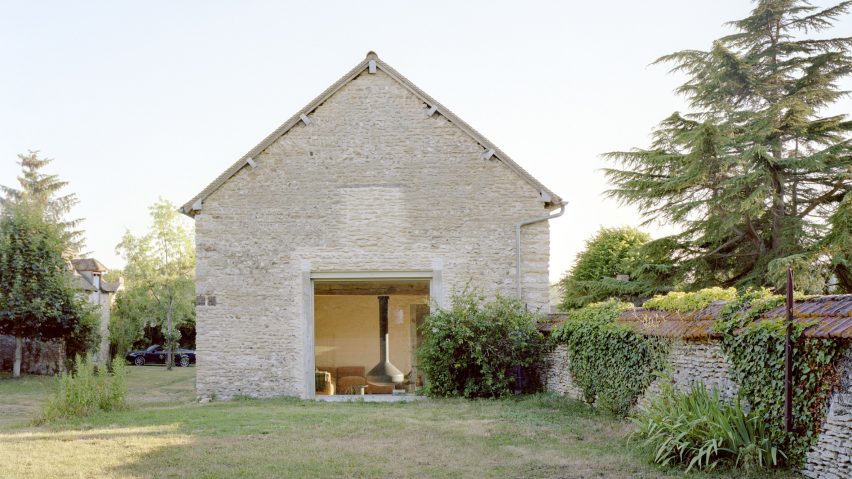Architecture practice Studio Guma has overhauled an old farmhouse in Normandy, retaining its stone and timber structure to "evoke the rural history" of the site.
Located in the village of Hécourt, the farmhouse and two outbuildings have been adapted to create a "family sanctuary" suitable for gatherings.
"The main ambition of the landowner was to create a place that could be shared by his relatives, or people who wanted to take a break from the city," explained Studio Guma.
"[It is] a place that could become a family sanctuary where individuals could reconnect with nature. A space for gathering with loved ones, preserving an ambience of calm and privacy. An architectural experience that could merge modernity within a rural canvas," it continued.
Studio Guma has preserved the farmhouse's existing structure and complemented it with subtle contrasts in concrete and steel.
The original divisions between the buildings have also been retained and used to help organise the home's reinvigorated spaces.
At the northern end of the site, the kitchen has been introduced into the former cart shed, taking advantage of the space's high ceilings. It opens out onto a paved patio through large sliding glass doors.
A new concrete floor is stepped at one edge to create bench-like seating, while a kitchen counter and island have been cast in pale pink concrete in a nod to the rough stonework of the existing walls.
"The kitchen-dining area, located in the former cart shed, serves as the central living space where various flows intersect, offering views of both interior and exterior spaces," explained Studio Guma.
"In summer, this area merges with the outdoors, becoming a crossroads of external and internal activity. In winter, the space is heated by the morning sun and provides a comfortable nest open to the surrounding nature."
The former stable now contains the living room, which features a fireplace on the ground floor. A mezzanine reading area above has been created by removing a section of an existing first floor.
"The [stable] typology, less open to the exterior, gave us the possibility to provide a more intimate experience," described the studio.
Where new openings have been introduced, they are framed by concrete sills, pale steel lintels and aluminium frames that complement the existing stonework, while pared-back interior finishes allow the exposed timber structure to come to the fore.
"We chose concrete, steel, and lacquered aluminium as the main materials of our intervention," explained Studio Guma. "Their textures subtly contrast with the mineral essence of the original structure, while their tones seek to harmonise with the existing colour palette."
At the opposite end of the building, a games room occupies a portion of the farmhouse that is yet to be refurbished, with plans to develop it in the future.
Other farmhouse renovations recently featured on Dezeen include a contemporary extension in Portugal by Atelier Data and the conversion of a 500-year-old building in Mallorca into a hotel by interior designer Pilar García-Nieto.
The photography is by Maxime Delvaux.

